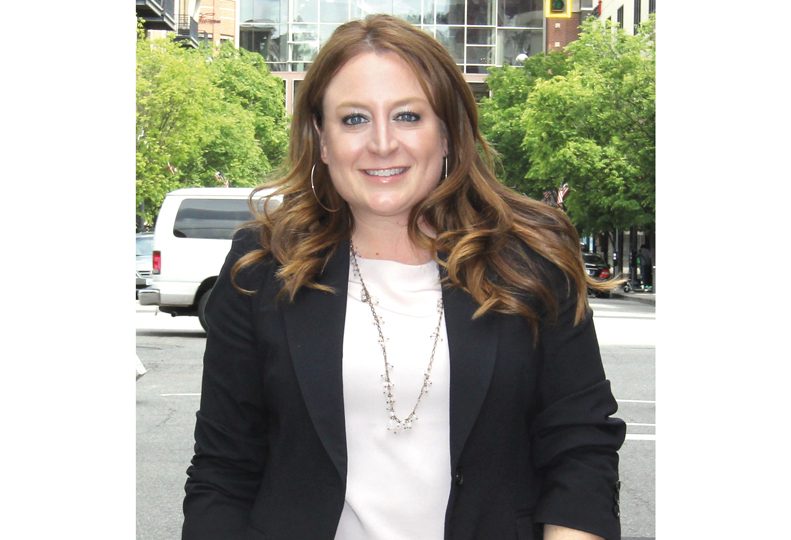
Home » Visions 2023: 'Vibe shift' to benefit downtown in the near future
Visions 2023: 'Vibe shift' to benefit downtown in the near future
Momentum lost during pandemic can return to city's core with effort

December 29, 2022
Like many urban centers across the globe, downtown Spokane was gaining momentum at an unprecedented pace in early 2020. Office vacancies reached record lows. Employers were expanding. New housing projects were under construction, and unparalleled civic amenities were elevating Spokane’s best kept secret. Then, suddenly, our downtown that had been on the rise for so long was suddenly paused.
As the pandemic left emptied offices, vacant storefronts and increasing crime in its wake, the heart of Spokane suddenly found itself on life support. The unimaginable shift, especially for retailers and restaurants forced to reinvent operations to survive, could have easily ended decades of transformative progress in downtown. But this is Spokane. We don’t stay down. We aren’t afraid to roll up our sleeves, come together and put the worst of the pandemic in the rear-view mirror.
Downtowns are vital to a community’s future. While small in physical size, downtown Spokane is immensely valuable and resilient on multiple levels. From driving tax revenue and business activity to hosting a concentration of resources, amenities, and social infrastructure, downtown Spokane plays a pivotal role in the long-term health of this region.
If Spokane wants a viable future, we must focus and support the changes that will encourage a strong downtown. It’s time to be bold, creative, collaborative and decisive. It’s time for a “vibe shift.”
The pandemic-era term is what it sounds like: a change. While it can be easy to think that may mean abandoning the office or traditional retail that once drove downtown’s economy, it’s not.
Downtown is and always will be a critical hub for economic activity and an important place to work. According to Brookings research, there is substantial, measurable value to employers and the economy when employees are located in close proximity not just to their colleagues, but to workers from other firms and sectors. While correlation is not causation, that suggestive relationship between place and productivity is important as we evaluate how downtown Spokane factors into the decisions of employers and workers and the resulting impact to the economic health of our region.
That’s why it remains crucially important we continue to encourage getting workers back. That said, while a commitment by public and private employers to support employees to come back would make a substantial difference, it’s unrealistic to expect a return to pre-COVID attendance in offices. The relationship between work and its place has forever been changed. Downtown isn’t just a place where people work anymore. It must be more.
Downtown must be a place where today’s workforce can work, innovate, and inspire as well as live, play, and recreate-a place brimming with activity from workers during the day as well as residents and visitors on nights and weekends thanks to added entertainment venues and attractions that draw people 24/7.
As we look to the next chapter of Spokane’s story, embracing all our economic, physical, social, and civic assets will be our advantage. For downtown, this means shifting to a more sustainable mix of commercial and residential space, enhancing connectivity to and within them, supporting business growth and growing quality public spaces where residents and visitors want to be.
The launch of City Line next year will connect the downtown core with surrounding neighborhoods, the U District, and in particular Gonzaga Universty like never before. The opening of the new downtown stadium, launch of the new zipline in Riverfront Park, and continued focus on riverfront enhancements will grow our region’s heart stronger with each beat.
Creating the conditions in which downtown can flourish is a critically important economic strategy. It’s time to focus on resiliency and shift to build an even stronger downtown in the years ahead. Different can be better.
Anticipating and embracing the opportunity for conversion of older buildings to other uses, in particular residential, is going to change the trajectory of downtown. Already, the city has updated planning efforts and made changes to infill housing regulations to support more options. Spokane is laying the foundation to lead the next era of change for downtown. Yet, it’s still expensive to turn offices into apartments and will require private and public investment to ensure we maximize our opportunities.
Similarly, making downtown living – and working or visiting – an appealing option will also require a continued focus on safety and security. We must ensure downtown is safe, clean, and welcoming for everyone. We can, and we will.
Downtown’s recovery is critical to Spokane’s future. Downtown is our community’s living room, a place where inclusion, diversity, and resilience thrive. A place where we gather, innovate, and inspire.
Fifty years ago, Spokanites came together in an incredible effort to recover and restore the glory of the river and reinvent downtown. I’m constantly inspired by the stories of leadership and vision that brought Expo 74 to Spokane. I can’t wait to hear what they say in the next 50 years about this pivotal time for downtown and Spokane.
Emilie Cameron is the president and CEO of the Downtown Spokane Partnership.
Latest News




